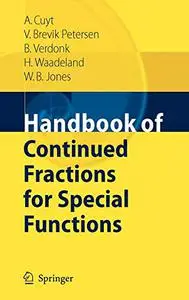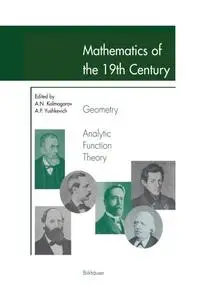Handbook of Continued Fractions for Special Functions by Annie Cuyt
English | PDF | 2008 | 430 Pages | ISBN : 1402069480 | 6 MB
Special functions are pervasive in all fields of science and industry. The most well-known application areas are in physics, engineering, chemistry, computer science and statistics. Because of their importance, several books and websites (see for instance http: functions.wolfram.com) and a large collection of papers have been devoted to these functions. Of the standard work on the subject, namely the Handbook of Mathematical Functions with formulas, graphs and mathematical tables edited by Milton Abramowitz and Irene Stegun, the American National Institute of Standards claims to have sold over 700 000 copies!




